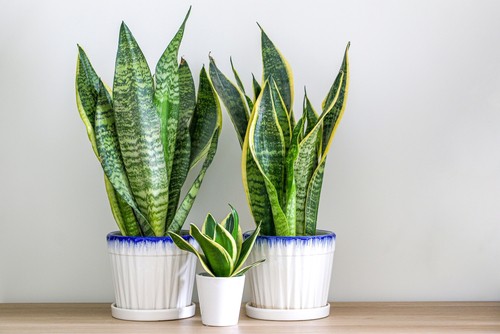Snake plants, also known as sansevieria or mother-in-law’s tongue, are popular houseplants that require minimal care. These evergreen perennials are native to arid regions of West Africa and have adapted to grow slowly to conserve water and energy.
While they have several benefits, including air purification and ease of care, there are also some disadvantages of a snake plant.
One of the main disadvantages of snake plants is their toxic nature. They contain saponins, which can cause gastrointestinal upset in pets and humans if ingested.
Additionally, the plant’s leaves can cause skin irritation in some individuals. Another disadvantage is the plant’s slow growth, which can be frustrating for those looking for a fast-growing houseplant. Snake plants also have specific requirements when it comes to light and temperature, and they may not thrive in certain environments.
Key Takeaways
- Snake plants have a toxic nature and can cause gastrointestinal upset in pets and humans if ingested.
- The plant’s slow growth can be frustrating for those looking for a fast-growing houseplant.
- Snake plants have specific requirements when it comes to light and temperature, and they may not thrive in certain environments.
More on this category:
- What are the Naked Seeded Plants Called?
- What Are the Plants That Look Like Corn Dogs?
- What Are the Tiny Orange Bugs on Plants?
Toxic Nature of Snake Plants
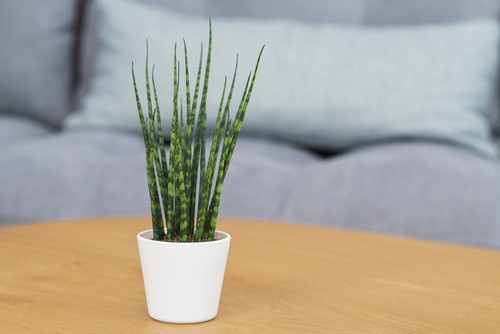
Snake plants, also known as Sansevieria, are popular houseplants due to their easy maintenance and air-purifying properties. However, they also have some disadvantages, including their toxic nature.
Toxicity to Humans
Snake plants contain saponins, a toxic chemical found in all parts of the plant, especially the leaves, flowers, rhizomes, and roots. Ingesting large amounts of saponins can lead to gastrointestinal issues, such as nausea, vomiting, diarrhea, and abdominal pain.
It can also cause tongue numbing and throat swelling, leading to difficulty swallowing.
Toxicity to Pets
While snake plants are more toxic to pets than humans, they are still a popular choice for pet owners due to their air-purifying properties. Ingesting any part of the plant can cause vomiting, diarrhea, and drooling in cats and dogs. In severe cases, it can also lead to lethargy, loss of appetite, and even death.
It is important to note that the severity of the toxicity depends on the amount ingested and the size of the pet. Larger pets may not experience as severe of symptoms as smaller ones. If you suspect your pet has ingested any part of a snake plant, it is important to contact your veterinarian immediately.
Disadvantages of a Snake Plant
1. Slow Growth Rate
Snake plants are known for their slow growth rate, which can be frustrating for some plant owners. The slow growth rate is due to the plant’s natural environment, where it grows in dry and arid conditions with minimal nutrients. The plant conserves energy by growing slowly, which helps it survive in harsh conditions.
If you are looking for a plant that grows quickly, the snake plant may not be the best choice. However, if you are patient and willing to wait, the snake plant can be a great addition to your indoor garden.
2. Propagation Problems

Propagating a snake plant can be challenging, even for experienced gardeners. The most common method of propagation is through stem cuttings, but this can be difficult due to the plant’s tough leaves and stem.
When propagating a snake plant, it is important to use a sharp, sterile knife to make a clean cut. The cutting should be at least four inches long and should have several leaves. After cutting, the stem should be allowed to dry for a few days before planting in well-draining soil.
Another propagation method is through division, which involves separating the plant into smaller sections and planting them separately. However, this can be tricky with snake plants due to their tough roots.
3. Lack of Growth
If your snake plant is not growing, there may be several reasons why. One common reason is a lack of nutrients in the soil. Snake plants prefer well-draining soil with minimal nutrients, but if the soil is too poor, the plant may not grow at all.
Another reason for slow growth or lack of growth is insufficient light. Snake plants prefer bright, indirect light, and if they are not getting enough light, they may not grow as quickly as they should.
In some cases, a lack of growth may be due to root rot, which can occur if the plant is overwatered or if the soil does not drain well. If you suspect root rot, it is important to take action quickly to prevent further damage to the plant.
Watering and Humidity Concerns
Snake plants are known for their hardiness and ability to tolerate neglect, but they still require proper watering and humidity levels to thrive. In this section, we will discuss the watering and humidity concerns associated with snake plants.
Overwatering Problems
Overwatering is one of the most common problems with snake plants. When the soil is constantly wet, it can lead to root rot and other fungal diseases. Signs of overwatering include mushy roots, yellowing leaves, and a foul odor. In severe cases, the plant may die.
To avoid overwatering, it is important to let the soil dry out between waterings. Snake plants prefer to be slightly underwatered rather than overwatered.
It is recommended to water the plant every two to four weeks during warm weather and less often during the cooler months. Before watering, check the soil with your finger to make sure the top layer of soil is dry.
Underwatering Issues
Underwatering is another common problem with snake plants. When the soil is too dry, the leaves may become wilted and droopy. The plant may also stop growing and become stunted.
To avoid underwatering, it is important to water the plant when the soil is dry. However, it is important not to let the soil become bone dry, as this can also harm the plant. When watering, make sure to water thoroughly and allow excess water to drain out of the pot.
Effects of Humidity
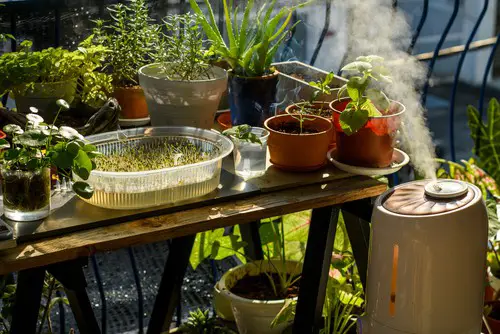
Snake plants prefer low to medium humidity levels. High humidity can lead to fungal diseases and other problems. If the air is too dry, the leaves may become brown and crispy.
To maintain proper humidity levels, it is recommended to place a tray of water near the plant or use a humidifier. However, it is important not to let the plant sit in standing water, as this can lead to overwatering and root rot.
Light and Temperature Sensitivity
Snake plants are known for their hardiness and ability to thrive in low light conditions. However, they are sensitive to both light and temperature changes, which can negatively impact their growth and health.
Impact of Sunlight
Snake plants prefer indirect light, but they can also tolerate low light conditions. However, they can be damaged by direct sunlight, which can cause their leaves to curl and yellow.
In indoor plants, it is essential to keep them away from windows that receive direct sunlight, especially during summer months when the sun is at its strongest.
On the other hand, lack of natural light can also affect snake plants. In low light conditions, they may grow slowly, and their leaves may become pale and thin. Therefore, it is crucial to find a balance between too much and too little light exposure.
Response to Cold Temperatures
Snake plants are sensitive to cold temperatures. They prefer warm and humid conditions and can be damaged by temperatures below 50°F (10°C). In indoor plants, it is essential to keep them away from drafty windows and doors, especially during winter months.
Cold temperatures can cause the leaves of snake plants to turn brown and wilt. If the plant is exposed to cold temperatures for an extended period, it can cause permanent damage to the plant, leading to stunted growth and even death.
Pest and Disease Susceptibility
Snake plants are generally hardy and low maintenance, but they are not immune to pests and diseases. In this section, we will discuss the common pest and disease problems that can affect snake plants.
Pest Infestations

Snake plants are susceptible to a variety of pests, including spider mites, mealybugs, and scale insects. These pests can cause damage to the leaves, resulting in yellowing, wilting, and even death of the plant.
Spider mites are tiny pests that can be difficult to detect. They feed on the sap of the plant, causing discoloration and distortion of the leaves. Mealybugs are another common pest that can infest snake plants.
They are small, white, and fluffy-looking insects that feed on the sap of the plant. Scale insects are another type of pest that can infest snake plants. They are small, oval-shaped insects that attach themselves to the leaves and stems of the plant, sucking out the sap and causing damage.
To prevent pest infestations, it is important to keep your snake plant healthy and well-maintained. Regularly inspect your plant for signs of pests, and take action as soon as you notice any problems. You can use insecticidal soap or neem oil to treat pest infestations.
Fungal Diseases
Snake plants are also susceptible to fungal diseases, such as southern blight and red leaf spot. Southern blight is a soil-borne disease that can cause the plant to wilt and die.
It is caused by a fungus that thrives in warm, moist conditions. Red leaf spot is another fungal disease that can affect snake plants. It causes small, reddish-brown spots on the leaves, which can eventually lead to leaf drop.
To prevent fungal diseases, it is important to avoid overwatering your snake plant. Make sure the soil is well-draining and allow the soil to dry out between waterings. If you notice any signs of fungal disease, such as wilting or discoloration of the leaves, remove the affected leaves and treat the plant with a fungicide.
Potting and Soil Requirements
Snake plants are popular houseplants because they are relatively easy to care for. However, poor potting conditions can cause problems for these plants. In this section, we will discuss the potting and soil requirements for snake plants.
Drainage Needs
Like most succulents, snake plants require well-draining soil. Poor drainage can cause the roots to rot, which can ultimately kill the plant. When potting a snake plant, it is important to choose a pot with drainage holes in the bottom. This will allow excess water to drain out of the soil, preventing the roots from becoming waterlogged.
Soil Preferences
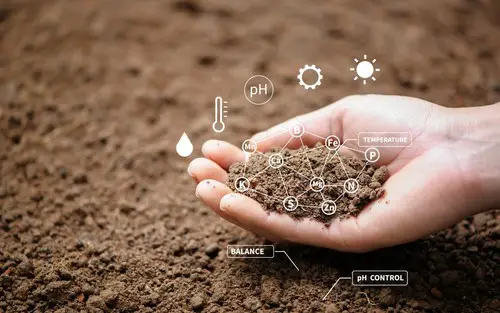
Snake plants prefer a well-draining potting mix that is rich in organic matter. A good potting mix for snake plants should be light and airy, allowing water to flow through it easily. It should also be able to hold moisture without becoming waterlogged.
When potting a snake plant, it is important to use a potting mix that is specifically formulated for succulents. These mixes are designed to provide the drainage and aeration that succulents need to thrive.
Myths and Misconceptions
Snake plants have been a popular indoor plant for a long time. However, there are still some myths and misconceptions surrounding these plants that need to be addressed.
Bad Luck and Feng Shui
One of the most common misconceptions about snake plants is that they bring bad luck. According to Feng Shui, placing a snake plant in the home or office can bring negative energy and misfortune. However, there is no scientific evidence to support this claim.
In fact, snake plants are known for their air-purifying abilities, making them a great addition to any indoor space. They can help remove toxins from the air, such as formaldehyde and benzene, which can improve indoor air quality and promote a healthier living environment.
Negative Energy Beliefs
Another misconception about snake plants is that they attract negative energy. Some people believe that the sharp leaves of the plant can cut through negative energy and protect the home from harm. However, there is no scientific evidence to support this claim either.
While it is true that plants can have a positive impact on mental health and well-being, there is no evidence to suggest that snake plants have any special properties in this regard. Like any other plant, snake plants can help create a calming and relaxing environment, but they do not have any magical powers.
Comparisons with Other Plants
Snake plants are one of the most popular indoor plants, but they are not the only ones. Here, we will compare snake plants with spider plants, another low-maintenance plant that is often used for indoor gardening.
Comparison with Spider Plant
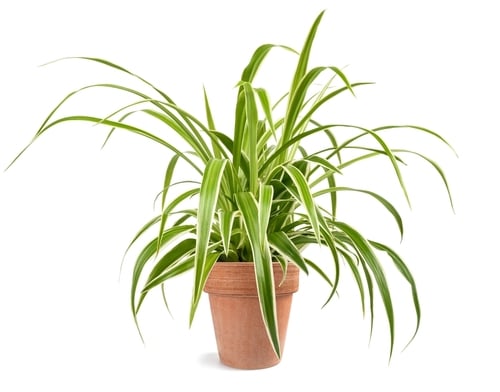
Spider plants (Chlorophytum comosum) are similar to snake plants in that they are easy to care for and can thrive in low light conditions. However, there are some differences between the two plants.
One major difference is the appearance of the leaves. Snake plants have long, pointed leaves that grow vertically, while spider plants have thin, arching leaves that grow horizontally. This makes spider plants a better choice for hanging baskets or for adding a cascading effect to indoor gardens.
Another difference is the growth rate. Spider plants grow much faster than snake plants and can quickly fill up a space. However, this can also make them more difficult to maintain, as they may need to be pruned more often.
In terms of toxicity, both snake plants and spider plants are safe for humans and pets. However, snake plants are known to be more toxic to pets, especially cats and dogs, than spider plants. This is something to keep in mind if you have pets in your home.
Environmental Impact
Snake plants are known for their air-purifying capabilities, which make them a popular choice for indoor plants. However, they also have certain disadvantages that should be considered, particularly in terms of their environmental impact.
Air Purifying Capabilities
One of the main benefits of snake plants is their ability to purify the air. They are known for their ability to remove toxins such as xylene, benzene, formaldehyde, and toluene from the air, which can have a positive impact on indoor air quality.
Effects on Indoor Air Quality
While snake plants are effective at removing certain toxins from the air, they also have the potential to release carbon dioxide at night, which can have a negative impact on indoor air quality.
This is because snake plants, like other plants, release oxygen during the day through photosynthesis, but at night they switch to a process called respiration, during which they release carbon dioxide.
In addition, snake plants have been found to release certain air pollutants, such as volatile organic compounds (VOCs), which can have a negative impact on indoor air quality. This is particularly true if the plant is overwatered or if it is placed in a poorly ventilated area.
Frequently Asked Questions
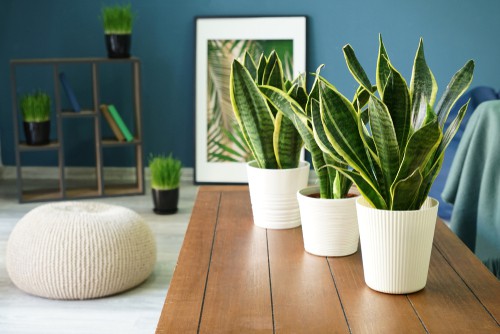
Is snake plant toxic to humans?
Yes, snake plant is toxic to humans if ingested in large amounts. It can cause vomiting, nausea, abdominal pain, and drooling. Therefore, it is important to keep the plant out of reach of children and pets.
Can snake plant cause skin irritation?
Yes, snake plant can cause skin irritation if its juices come into contact with sensitive skin. It can cause dermatitis or a rash. Therefore, it is advisable to wear gloves when handling the plant.
Is snake plant harmful to pets?
Yes, snake plant is harmful to pets if ingested. It can lead to poisoning and cause symptoms such as vomiting, gastrointestinal problems, excess drooling, and diarrhea.
If you notice any of these symptoms on your pets, they may have ingested the snake plant at home. It is important to take the animal to the nearest vet for treatment.
What are the risks of having snake plant around babies?
Babies are curious and tend to put everything they find in their mouth. Therefore, it is important to keep the snake plant out of reach of babies as it is toxic if ingested.
It is also important to keep the plant away from the baby’s crib as it can cause skin irritation if the baby comes into contact with it.
Can people be allergic to snake plant?
Yes, people can be allergic to snake plant. The plant’s pollen can cause allergic reactions such as sneezing, runny nose, and itchy eyes. Therefore, it is important to keep the plant away from people who are allergic to it.
What are the negative effects of having snake plant in the house?
One of the main disadvantages of snake plant is that it grows at a slow rate when placed indoors. It also loves to expand its roots a lot, and putting it into a planter restricts the root spread, which affects the formulation of additional leaves.
Cutting off the tips of the plant’s leaves affects how high the leaves can grow.

Hey, I’m Lisa and I’ve been an avid gardener for over 30 years. I love writing, talking and living in the garden! Feel free to connect with me on my socials below

